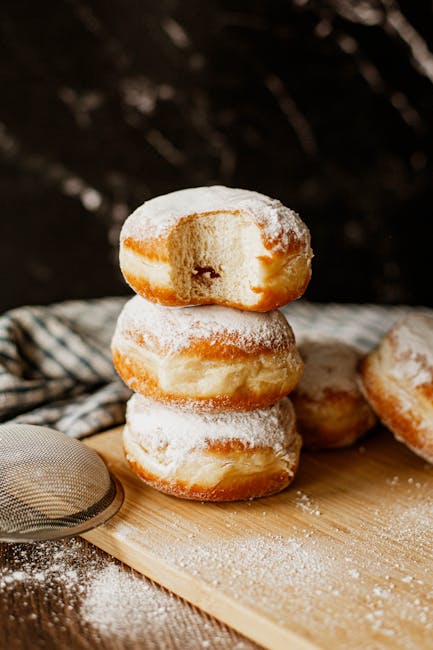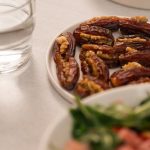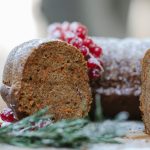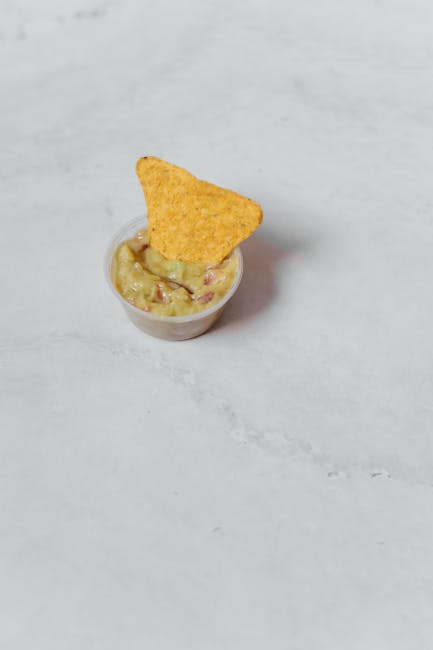Prepare to embark on a culinary journey to the sun-drenched isles of Greece, where the aroma of warm spices and honeyed sweetness hangs heavy in the air. We’re about to explore the delightful world of Homemade Greek Melomakarona, a traditional treat deeply woven into the fabric of Greek culture and holiday celebrations. These delectable semolina cookies, rich in olive oil and generously drenched in a fragrant honey syrup, are far more than just a dessert; they represent a cherished heritage passed down through generations.
The origins of Melomakarona are shrouded in the mists of time, but their existence predates modern Greece. While pinpointing a precise origin is difficult, evidence suggests variations of these honey cakes existed in the Byzantine Empire, possibly even earlier. Their enduring popularity speaks volumes about their adaptability and deliciousness, allowing them to survive and thrive across centuries and various regional interpretations. The name itself, Melomakarona, is a beautiful blend of Greek words: méli (honey) and makaron (a type of pasta), aptly describing their honey-soaked, pasta-like texture.
Melomakarona are inextricably linked to the Greek Christmas season, appearing on tables across the country during the twelve days of Christmas and beyond. They are a staple of the festive season, often prepared in large quantities, not just for immediate consumption but also as gifts for family and friends. In fact, an estimated 90% of Greek households bake Melomakarona during the Christmas period, highlighting their central role in the nation’s culinary traditions. This widespread baking represents a powerful connection to ancestry and a shared cultural identity, with each family’s recipe passed down, subtly tweaked, and cherished through the years.
Beyond their Christmas significance, Melomakarona are enjoyed throughout the year, albeit less frequently. Their rich flavour and satisfying texture make them a welcome treat for any occasion. The precise combination of spices can vary regionally, with some recipes incorporating more cinnamon, others emphasizing cloves or nutmeg. This regional diversity showcases the versatility of the recipe and its adaptability to local tastes, further enriching its long and fascinating history. The act of making Melomakarona itself is often a communal affair, bringing families together and fostering a sense of shared tradition, ensuring that this beloved treat continues to delight generations to come.
Ingredients and Measurements
Creating authentic Greek Melomakarona requires precise measurements and high-quality ingredients. The success of these delicate cookies hinges on the balance of flavors and the texture achieved through careful attention to detail. Below, you’ll find a comprehensive list of ingredients and their precise measurements, along with some professional recommendations to ensure your Melomakarona are truly exceptional.
For the Melomakarona Dough:
- Semolina Flour (Fine): 250g (1 ¾ cups + 2 tbsp): Using fine semolina is crucial for achieving the desired texture. Coarse semolina will result in a coarser, less tender cookie. Ensure your semolina is finely ground for optimal results. Sifting the semolina before use is also recommended to remove any lumps.
- All-Purpose Flour: 125g (1 cup): This adds structure and helps bind the ingredients together. Using a good quality all-purpose flour is important.
- Olive Oil (Extra Virgin): 150ml (⅔ cup): Use a good quality extra virgin olive oil with a mild flavor. A strong, peppery olive oil can overpower the delicate spices. Measure accurately, as the oil content influences the texture.
- Sugar: 100g (½ cup + 2 tbsp): Granulated sugar is best. Do not reduce the sugar as it contributes to both sweetness and the caramelization during baking.
- Orange Juice: 100ml (½ cup): Freshly squeezed orange juice is strongly recommended. Avoid using bottled juice as it often contains preservatives that can affect the flavor and texture of the cookies.
- Red Wine (Sweet): 50ml (¼ cup): A sweet red wine like Mavrodaphne (a Greek variety) adds depth of flavor. If you don’t have Mavrodaphne, a good quality sweet red will suffice. Avoid using dry wine.
- Baking Soda: 1 tsp: This acts as a leavening agent, creating a slightly airy texture. Ensure it’s fresh for the best results.
- Ground Cinnamon: 1 tbsp: A classic Melomakarona spice. Adjust to your preference, but don’t omit it completely.
- Ground Cloves: ½ tsp: Adds warmth and complexity. Start with a small amount and add more if desired.
- Pinch of Salt: Enhances the overall flavor profile.
For the Syrup:
- Water: 500ml (2 cups)
- Sugar: 500g (2 cups + 2 tbsp): Use granulated sugar.
- Honey: 250ml (1 cup): Use a good quality honey, like Greek thyme honey, for the best flavor.
- Orange Zest: 1 tbsp: Adds a bright citrus note to the syrup. Use a fine grater to obtain the zest.
- Cinnamon Sticks (2-3): Adds warmth and aroma to the syrup.
- Cloves (3-4): Enhances the spice profile of the syrup.
For Decoration (Optional):
- Chopped Walnuts or Almonds
- Extra Honey for Drizzling
Important Note: Weighing your ingredients using a kitchen scale is highly recommended for accuracy. Volume measurements can vary depending on how ingredients are packed.
Equipment List
Making Melomakarona, while rewarding, requires a specific set of equipment to ensure optimal results. Having the right tools on hand will streamline the process and prevent frustration. This list details the essential equipment, along with recommendations for substitutions and alternatives where applicable.
Mixing Bowls: You’ll need at least three mixing bowls of varying sizes. One large bowl (approximately 8-10 quart capacity) is crucial for combining the wet ingredients, another medium-sized bowl (approximately 4-6 quart capacity) for the dry ingredients, and a smaller bowl (approximately 2-3 quart capacity) for whisking the egg whites (if using a meringue method for extra fluffiness). Stainless steel bowls are ideal as they are durable and easy to clean. Glass bowls are also a good alternative, but avoid plastic bowls as they can sometimes retain odors.
Measuring Cups and Spoons: Accurate measurements are paramount in baking. Invest in a good set of measuring cups and spoons. Use dry measuring cups for dry ingredients (flour, sugar, etc.) and liquid measuring cups for wet ingredients (oil, honey, etc.). Having both metric and imperial measurements is beneficial for following various recipes.
Whisk: A sturdy whisk is essential for incorporating air into the batter and ensuring a smooth consistency. A balloon whisk is recommended for its efficiency in whipping the batter and incorporating ingredients evenly. A hand mixer can also be used, but a whisk provides a more delicate touch.
Wooden Spoon or Spatula: A wooden spoon or a sturdy rubber spatula is necessary for folding and mixing the ingredients gently. Avoid using metal utensils as they can scratch your bowls and potentially react with some ingredients.
Baking Sheets: You will need at least two large baking sheets (approximately 18×26 inches). Line them with parchment paper to prevent sticking and make cleanup easier. High-quality parchment paper is recommended to withstand high temperatures without tearing.
Cookie Scoop or Spoons: A cookie scoop (approximately 1.5-inch diameter) will help create uniform-sized Melomakarona. This ensures even baking and consistent texture. Alternatively, you can use two spoons to carefully drop the batter onto the baking sheets.
Syrup Pot: A medium-sized saucepan (approximately 3-4 quart capacity) is required for making the syrup. Choose a heavy-bottomed saucepan to ensure even heating and prevent scorching. A candy thermometer is highly recommended for precise syrup temperature control.
Wire Rack: A wire rack is crucial for cooling the Melomakarona after baking and draining excess syrup. It allows for even cooling and prevents sogginess.
Optional Equipment: While not entirely necessary, a stand mixer with a paddle attachment can simplify the mixing process, especially if making a large batch. A candy thermometer ensures accurate syrup temperature for perfect results. A pastry brush can be used to evenly coat the Melomakarona with syrup.
Preparation of the Syrup
The syrup is the heart and soul of Melomakarona, imbuing them with their characteristic aroma and sweetness. A well-made syrup is crucial for achieving the perfect balance of flavor and texture. This recipe yields a generous amount, ensuring your Melomakarona are beautifully saturated.
Ingredients for the Syrup:
- 2 cups (400g) granulated sugar
- 1 ½ cups (300ml) water
- ½ cup (120ml) honey (preferably a darker, robust honey like Greek thyme honey)
- 1 cinnamon stick (about 4 inches long)
- 6 whole cloves
- 1 orange, zested and juiced (about ¼ cup juice)
- 1 lemon, zested and juiced (about ¼ cup juice)
- Optional: 1/4 cup (60ml) orange liqueur (like Grand Marnier or Cointreau) for an extra layer of complexity.
Instructions:
In a medium saucepan, combine the sugar and water. Stir gently until the sugar dissolves completely. Do not rush this step; ensure the sugar is fully dissolved to prevent crystallization.
Once the sugar is dissolved, add the honey, cinnamon stick, cloves, orange zest, lemon zest, orange juice, and lemon juice. Stir well to combine all the flavors.
Bring the mixture to a boil over medium heat, stirring occasionally. Once boiling, reduce the heat to low and simmer gently for at least 20-25 minutes, or up to 30 minutes for a richer, thicker syrup. Skim off any foam that forms on the surface during simmering for a clearer, more appealing syrup.
After simmering, carefully remove the cinnamon stick and cloves. If using an orange liqueur, stir it in now. Allow the syrup to cool completely before using. This is crucial; hot syrup will melt the Melomakarona and create a soggy texture. Cooling the syrup also allows the flavors to meld and deepen.
Professional Recommendations:
- Use a heavy-bottomed saucepan to prevent scorching or burning.
- For a clearer syrup, strain it through a fine-mesh sieve after cooling to remove any remaining zest particles or spice fragments.
- The consistency of the syrup should be thick enough to coat the back of a spoon. If it’s too thin, simmer it for a few more minutes. If it’s too thick, add a tablespoon or two of warm water and stir.
- Store leftover syrup in an airtight container in the refrigerator. It will keep for several weeks and can be used for other desserts or as a glaze.
Important Note: The timing for simmering is approximate; the ideal consistency will depend on your stove and the type of honey used. It’s best to check the syrup’s thickness periodically towards the end of the simmering time.
Making the Dough
Creating the perfect melomakarona dough requires precision and patience. This recipe yields approximately 40-50 cookies, depending on size. Begin by gathering all your ingredients: 1 cup extra virgin olive oil, 1 cup semolina flour (finely ground), 1 cup all-purpose flour, 1 cup granulated sugar, 1 teaspoon baking powder, 1/2 teaspoon ground cinnamon, 1/4 teaspoon ground cloves, 1/2 teaspoon grated orange zest, 1/2 cup strong brewed, cooled coffee (or orange juice), 1/2 cup fresh orange juice, and 1/2 cup walnuts or almonds, finely chopped.
In a large mixing bowl, whisk together the semolina flour, all-purpose flour, sugar, baking powder, cinnamon, and cloves. Ensure all dry ingredients are thoroughly combined to prevent clumping. This step is crucial for an even texture in your final product.
Next, add the olive oil, orange zest, cooled coffee (or orange juice), and fresh orange juice to the dry ingredients. Begin mixing with a wooden spoon or spatula, gradually incorporating the liquids into the dry mixture. The dough will initially be quite crumbly.
As you continue mixing, the dough will start to come together. If it seems too dry, add a tablespoon or two of additional orange juice, one at a time, until a soft, pliable dough forms. Conversely, if it’s too wet, add a tablespoon of flour at a time until the desired consistency is achieved. The key is to achieve a dough that is not sticky but also not excessively dry and crumbly.
Once the dough is well combined, gently fold in the chopped nuts. Avoid overmixing at this stage, as it can result in a tough dough. Just a few gentle folds are sufficient to distribute the nuts evenly.
Now, it’s time to rest the dough. Lightly flour a clean surface and turn the dough out onto it. Form the dough into a large ball. Wrap the dough tightly in plastic wrap and refrigerate for at least 2 hours, or preferably overnight. This resting period allows the gluten to relax, resulting in a softer, more tender melomakarona.
Refrigerating the dough also helps to develop the flavors and makes it easier to handle when shaping the cookies. After the resting period, your dough will be ready to be shaped and baked. Remember to take it out of the refrigerator about 30 minutes before shaping to allow it to reach room temperature.
Following these steps carefully will ensure a delicious, melt-in-your-mouth melomakarona. Don’t be afraid to adjust the liquid quantities slightly depending on the type of flour you use and the humidity of your environment. The goal is a smooth, workable dough that holds its shape well.
Shaping the Melomakarona
Shaping your melomakarona is a crucial step in achieving both beautiful and delicious results. The size and shape you choose will impact both the baking time and the final texture. While traditionally shaped like small, elongated logs, your creativity can shine here – feel free to experiment!
Start with the right temperature: Work with the dough while it’s still slightly warm. This makes it pliable and easier to handle. If the dough has cooled considerably, gently warm it up by kneading it for a minute or two, or briefly microwaving it in 10-second intervals until it’s more malleable. Avoid overheating, as this can make it sticky and difficult to work with.
Portioning the dough: For classic melomakarona, aim for roughly 1-1.5 inch (2.5-3.8 cm) diameter rolls, approximately 3-4 inches (7.6-10 cm) long. This size ensures even baking and a pleasing texture. To ensure consistency, weigh your portions. Each piece should weigh approximately 20-25 grams (0.7-0.9 ounces). You can use a kitchen scale for precise measurements. If you prefer smaller cookies, adjust the weight accordingly.
Rolling and shaping techniques: Lightly flour your work surface to prevent sticking. Roll the dough into a long cylinder, approximately 1 inch (2.5cm) in diameter. Use a sharp knife or a pastry cutter to divide the roll into equal-sized pieces. Then, gently roll each piece into a smooth, slightly elongated log. Avoid over-handling the dough, as this can lead to tough melomakarona. For a more rustic look, you can leave the edges slightly uneven.
Alternative shapes: Feel free to experiment with different shapes! You can create small balls, slightly flattened discs, or even braid the dough for a unique presentation. If making smaller shapes, reduce the baking time accordingly to prevent burning. Remember to maintain a consistent size for even baking.
Creating a textured surface (optional): For a more visually appealing melomakarona, you can create a lightly textured surface. Gently roll the shaped cookies on a lightly floured surface, creating subtle grooves. This will enhance the syrup absorption during the dipping process, resulting in a more intense flavor.
Preparing for baking: Once all the melomakarona are shaped, arrange them on a baking sheet lined with parchment paper, leaving some space between each piece to allow for expansion during baking. Ensure they are evenly spaced to guarantee even cooking and prevent sticking.
Important Note: The exact size and weight of your melomakarona may vary depending on your preferred size and the overall consistency of your dough. Adjust the baking time as needed to achieve perfectly baked, soft, and chewy melomakarona. Always monitor your cookies closely during baking to avoid burning.
Baking the Melomakarona
Baking the melomakarona is the final, crucial step in creating these delightful treats. The oven temperature and baking time are critical for achieving the perfect texture – soft inside and slightly crisp on the outside. We’ll walk you through the process step-by-step, ensuring your melomakarona turn out perfectly.
Preheat your oven to 350°F (175°C). This is a crucial step; ensure your oven is fully preheated before placing the trays inside. Using a preheated oven ensures even baking and prevents the cookies from spreading too much or becoming unevenly browned.
Line two large baking sheets with parchment paper. This prevents sticking and makes cleanup a breeze. Lightly grease the parchment paper with olive oil or butter to further ensure easy removal of the baked melomakarona.
Using a spoon or a piping bag fitted with a large round tip, carefully place the melomakarona dough onto the prepared baking sheets, leaving about 2 inches between each cookie. Avoid overcrowding the baking sheets, as this will hinder proper air circulation and lead to uneven baking. They will spread slightly during baking, but not excessively if you give them enough space.
Bake for approximately 20-25 minutes, or until the edges are lightly golden brown. Keep a close eye on them during the last 5-7 minutes of baking, as ovens can vary. Use a toothpick inserted into the center of a cookie to check for doneness; if it comes out clean, they are ready. If the center is still soft, bake for a few more minutes, checking frequently.
Once baked, carefully remove the baking sheets from the oven and let the melomakarona cool on the baking sheets for about 10 minutes before transferring them to a wire rack to cool completely. Allowing them to cool completely on the baking sheet for a short time before transferring helps prevent breakage.
Important Note: Baking times can vary depending on your oven and the size of your cookies. It’s always best to start checking for doneness around the 20-minute mark and adjust accordingly. Overbaked melomakarona will be dry and hard, while underbaked ones will be gummy.
Once completely cooled, you can proceed to the next step: the delicious honey syrup! The slightly warm melomakarona will absorb the syrup better, resulting in a more flavorful and moist final product. However, ensure they are completely cool before storing to prevent them from becoming soggy.
Professional Tip: For perfectly even baking, consider rotating the baking sheets halfway through the baking time. This ensures all sides receive equal heat exposure and prevents uneven browning.
By following these instructions carefully, you’ll be well on your way to baking perfect, golden-brown melomakarona ready for their sweet honey bath. Enjoy the process and the delicious results!
Recommendations for Homemade Greek Melomakarona
Your homemade Greek Melomakarona are sure to be a delightful treat! To ensure you get the most enjoyment from these delicious cookies, follow these recommendations for serving, storage, and pairing with other dishes.
Serving Suggestions: Melomakarona are best served at room temperature, allowing the warm spices and honey syrup to fully bloom. For an extra special touch, dust them lightly with extra ground cinnamon or chopped walnuts just before serving. Consider arranging them on a beautiful serving platter, perhaps interspersed with sprigs of fresh rosemary or mint for a visually appealing presentation. They are fantastic on their own, but also delightful as part of a larger dessert spread.
Storage Conditions: To maintain their freshness and prevent them from becoming soggy, store your Melomakarona in an airtight container at room temperature for up to 3 days. Avoid refrigeration, as this can cause the syrup to crystallize and the cookies to become hard. If you need to store them longer, consider freezing them. Wrap them individually in plastic wrap and then place them in a freezer-safe bag or container. They can be stored frozen for up to 2 months. To thaw, simply remove them from the freezer and let them come to room temperature before serving. They may need a few minutes to soften up after thawing.
Complementary Dishes: The rich, spiced flavor of Melomakarona pairs beautifully with a variety of other dishes. They are a perfect complement to a strong Greek coffee or a glass of sweet dessert wine like Moscato or Vin Santo. They also work wonderfully alongside other traditional Greek desserts, such as kourabiedes (butter cookies) or baklava. If you’re serving them as part of a meal, consider pairing them with a light and refreshing salad or a savory dish with a hint of citrus, such as grilled lemon chicken or a Greek salad. The contrast in flavors will create a balanced and satisfying culinary experience.
Nutritional Information (Approximate per cookie, values may vary based on ingredients used): Calories: Approximately 150-200 calories. Fat: 8-10g. Saturated Fat: 3-5g. Carbohydrates: 20-25g. Sugar: 15-20g. Protein: 2-3g. Note: This is an estimate and the actual nutritional content may vary depending on the specific ingredients and quantities used in your recipe. For a more precise analysis, consider using a nutrition calculator with your exact recipe details.
Important Note: The success of your Melomakarona hinges on the quality of your ingredients. Use good quality olive oil, honey, and spices for the best flavor and texture. Don’t be afraid to experiment with different spices to find your perfect blend! Enjoy your delicious homemade Greek Melomakarona!





